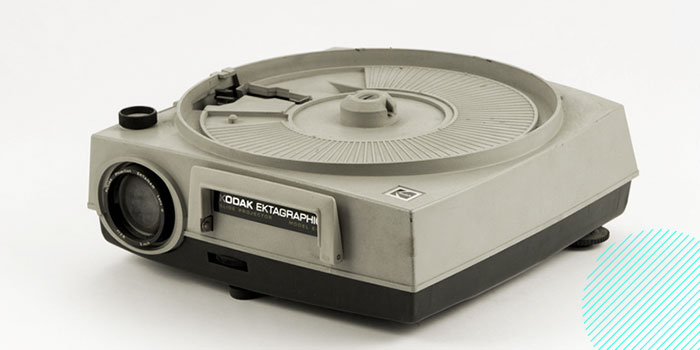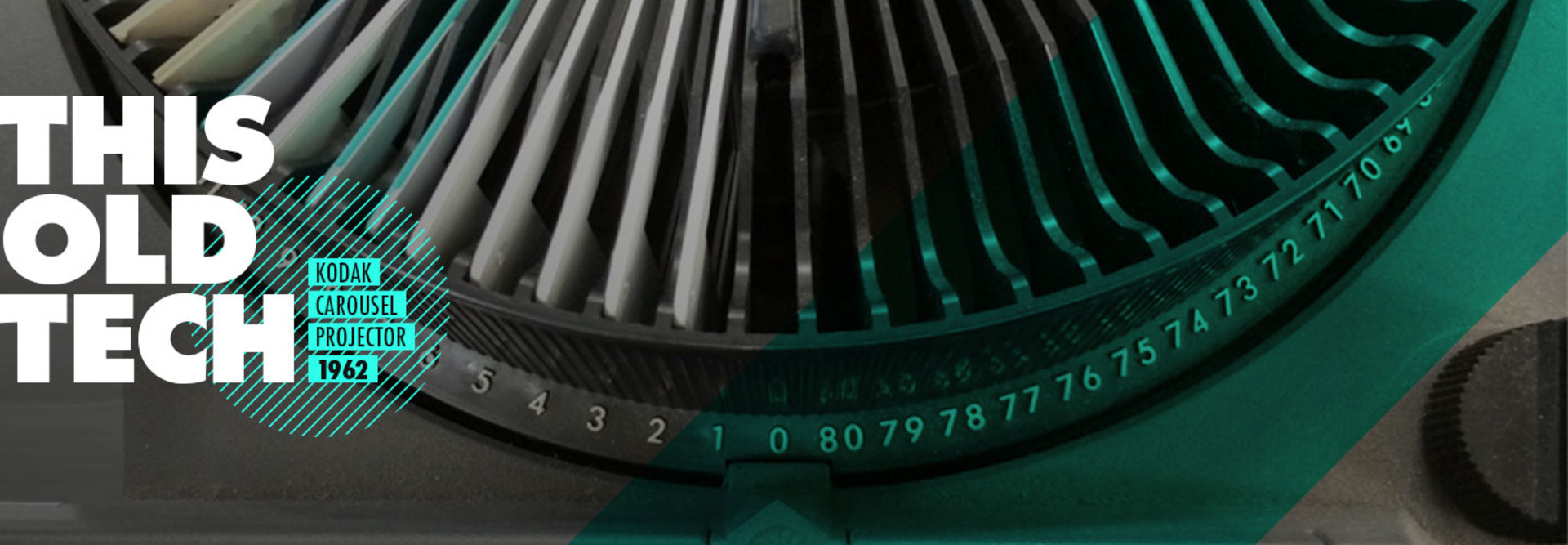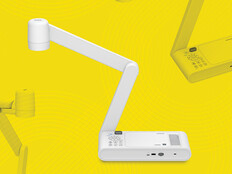Kodak Carousel Projectors Revolutionized the Lecture
The slideshow has long been a staple of the college lecture.
Today, students follow Microsoft PowerPoint presentations from their notebook computers and mobile devices, but one of the earliest art history lectures to use a slideshow looked considerably different.
As reported in a research paper by Allan T. Kohl of the Minneapolis College of Art and Design, the first use of a slide projector in an art history lecture was in 1873, and the professor used a potentially dangerous live-flame lantern projector.
But, as Kohl writes, the heyday of the slide projector didn’t come until after 35 mm film was created in 1925. Then in the 1960s, the Kodak Carousel Slide Projector was introduced.
WHAT is the Kodak Carousel Projector?

Courtesy of Wikipedia
The Kodak Carousel Projector, which was often identified by its circular tray holding 80 to 140 35 mm slides, was the first to allow professors to preload lectures and automate shows with no manual reset, Kohl writes.
The projector also featured what Kodak calls the “gentle gravity feed of slides,” made to prevent jamming. The carousel tray also held slides with a locking ring to prevent them from spilling if the machine was shifted or dropped.
WHEN was the Kodak Carousel Projector introduced?

Courtesy of Classic Film, Published in Life magazine, August 21, 1970, Vol. 69 No. 8
Kodak first offered Kodachrome film for 35 mm slide projection in the late 1930s. By 1946, Kohl writes, a directory of art history slides was developed and available for purchase via catalog.
In the 1950s, 35 mm slide projectors had become extremely popular as home entertainment devices showing images of vacations and family gatherings, reports Ithaca College’s Visual Resources Collection.
Henry Petroski, a professor of civil engineering, wrote in the journal American Scientist that during the 1970s, ’80s and ’90s the Kodak Carousel Projector was present in all venues at which he was a guest lecturer.
“As recently as about five years ago, when I indicated to a host that I would need the use of a projector, just about everyone understood that to mean a Kodak 35 mm slide projector (or its equivalent), and just about every venue had one readily available,” Petroski wrote.
The first Kodak Carousel Projector model was introduced in 1962 and dozens of models were created, ending with the Carousel 5200-K (released in 1984).
WHY did the Kodak Carousel Projector die off?

Courtesy of rosefirerising/Flickr
PowerPoint was updated to include image files in 1997, which Kohl says had a huge part in “accelerating the transition from 35 mm slides toward the use of digital images for instructions.”
But largely, the digitalization of photography itself was the culprit behind the demise of the Kodak Carousel Slide Projector.
As digital images became the preferred medium, production of all Kodak slide projectors stopped in 2004, and Kodachrome film was discontinued in 2009.
The Kodak Carousel Projector held on until the early 2000s because of its convenient size and remote control capabilities, Petroski muses.
Today, lecturers that incorporate media like photos and video do so through a digital projector or large-screen monitors.
Want to take a look at the Kodak Carousel in its prime? Check out episode 13 of Mad Men’s first season, where Don Draper presents an ad campaign for the projector to Kodak executives.
"This Old Tech" is an ongoing series about technologies of the past that had an impact. Have an idea for a technology we should feature? Please let us know in the comments!










